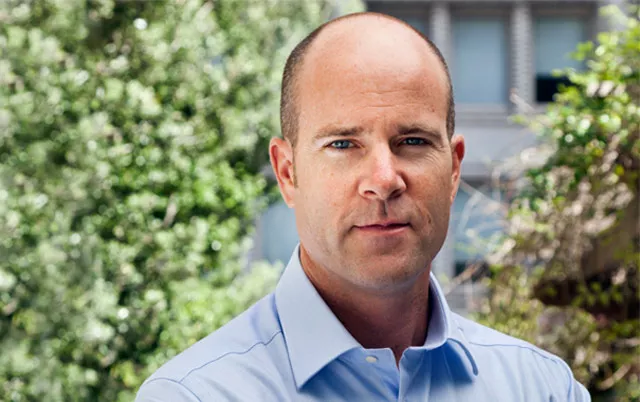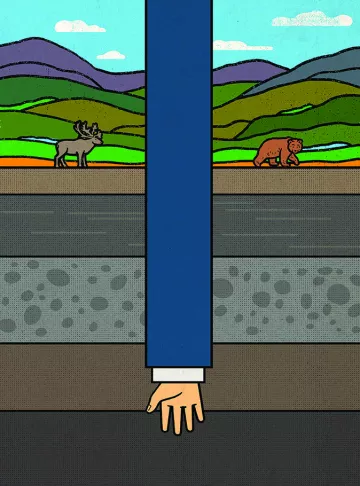Arctic Smash and Grab
There's still time to stop oil drilling in the Arctic Refuge

Photo by Henrik Ham
When I first saw the Arctic National Wildlife Refuge from the air, what struck me was its immensity. Although it occupies less than 5 percent of Alaska, the refuge is larger than 10 states. It could hold eight Yellowstone National Parks, with room left over for a couple of Yosemites.
Because of its incredible wildlife—most famously, the massive caribou herds—the refuge has been called "America's Serengeti." But these lands are wilder than any national park in Africa; there are no roads and no signs. The only trails are the rivers and streams that rush from the Brooks Range, meander across the coastal plain, and empty into the Beaufort Sea. Paddling this ancient route from mountains to sea, I felt more like a time traveler than a tourist. Most of all, I felt deeply grateful to those who had worked hard for more than half a century to defeat attempts to open the refuge to oil and gas drilling.

But in the closing weeks of 2017, that long-standing vigilance was overwhelmed when Republicans in Congress, almost as an afterthought, opened the refuge's coastal plain to oil and gas leasing as part of their tax giveaway to corporations and the wealthy. What was the Arctic National Wildlife Refuge doing in a tax bill, anyway? The bill's supporters claimed that revenue from drilling in the refuge would defray some of the tax cuts while boosting U.S. energy independence. But to make a dent in the budget deficit, oil and gas companies would need to lease every single available acre of the coastal plain at prices 10 times higher than what they're paying anywhere else in Alaska's North Slope. As for increasing energy independence, simply keeping in place the Obama administration's fuel-economy standards (which Trump's EPA wants to roll back) would save almost twice as much oil than is estimated to exist beneath the entire coastal plain.
Illustration by Dan Page Now that the door has been opened to drilling, the Trump administration is racing to begin lease sales as early as next year. As with so many of this administration's environmental attacks, the extreme speed calls to mind a gang of thieves bagging loot while a burglar alarm rings in their ears.
Although this is as close as we've ever been to seeing the Arctic Refuge's ecological integrity destroyed, the drilling hasn't started yet, and we can stop it before it does. How? One strategy is to act in solidarity with the Gwich'in Athabascan people, who depend on the refuge and its caribou for their way of life. The Gwich'in have opposed development in the refuge from the beginning, and their moral leadership in this fight is crucial. They can make the strongest claims—in the court of law and the court of public opinion—that drilling in the refuge would constitute a grave act of injustice to biological communities and human communities alike.
The Sierra Club, the Gwich'in, and others are also pushing major banks and investors to promise not to underwrite any drilling in the refuge. In May, a group of institutional investors holding some $2.5 trillion in assets announced their opposition to any fossil fuel development in the refuge. "Making any capital investments to pursue Arctic Refuge oil would be an irresponsible business decision, at the very time when we are transitioning away from fossil fuels," the investors wrote in a letter.
Once we've turned the corner on this crisis, we must redouble our efforts to get the refuge the permanent protection it deserves by having Congress declare the coastal plain a federal wilderness. Ultimately, though, the Arctic National Wildlife Refuge won't be safe from development until we have replaced dirty fuels with clean, renewable energy sources. That day is coming. Whether it will be in time for the birds, the bears, the caribou, and the people of the Far North is up to us.
 The Magazine of The Sierra Club
The Magazine of The Sierra Club



